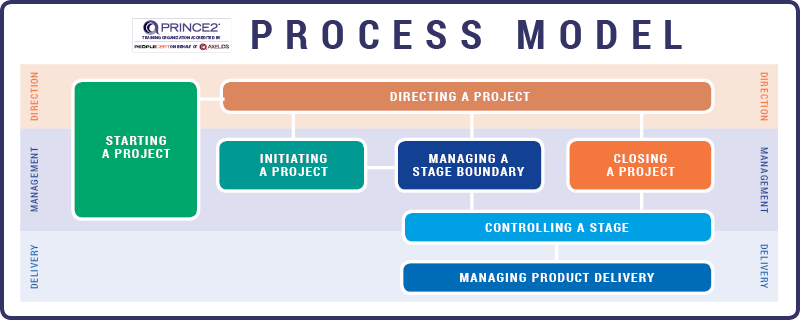Table of Contents
ToggleThe roles and responsibilities after PRINCE2 Certification can be confusing. PRINCE2 defines seven roles, which are divided into two categories: major and minor. Project Managers, executives, sponsors, and team members are the major roles. Assistant Project Manager, Project Support Officer, and Delegated Accountable Manager are the minor roles. There are specific duties and tasks assigned to each role. The purpose of this post is to clarify the roles and responsibilities for each type of role. Make the most of this opportunity by opting for a PRINCE2 course.
PRINCE2 Certification Core Role
There are three clearly defined and critical roles in the PRINCE2 methodology-

1. Project Manager
The project manager is the professional held responsible for coordinating project success across the organization. They are also responsible for the control and execution of all the required activities and processes. The project manager puts together the team conducting the activities and oversees all work to ensure quality and timelines are maintained.
2. Customer/User/Supplier
This is a professional financing project and is affected directly by the success or failure of the same. The customer can be the user but the supplier is often the supplier of insight and additional information that ensures the project is completed.
3. Project Board
The project board is a team of customers and executives. The project manager offers constant and thorough reports to the project board to alert them of ongoing progress and any concerns that may crop up. The project board offers the blueprint on how to address problems or how to move the project forward.
PRINCE2 Certification Process
The PRINCE2 process consists of seven key steps that are interconnected. They allow stakeholders to address, manage, and ensure the complete delivery of the project.

1. Commencement of the Project
At this initial stage, the project is assessed for feasibility. Should it be a strong contender, the project information is passed to the project board in the form of a brief. The brief explains the context of the project, the best possible ways to execute the same, and a detailed plan. The detailed plan explains the work that is conducted during the next phase, the initiation stage.
A critical document constructed at this time is the Trigger or the project mandate. Additionally, this is the phase where all due diligence is conducted so time is not wasted after the project is underway.
2. Initiation of the Project
The second phase includes addressing questions and concerns about the project. These include questions like project requirements, reasons to undertake the projects, risk and reward analysis, and the measures in place to rectify or facilitate the same. The project scope answers these questions and offers when the product can be delivered and how standards of quality can be maintained.
Additionally, mechanisms to monitor progress and the hierarchy of communication are clearly established. The project controls, plans, initial documentation, strategies, configuration around quality, and risk analysis are critical components of this stage.
3. Project Direction
The third phase involves establishing clear authority over the activities of the project. This includes where authorization stems from and the chain of command established until project closure. The project board is responsible for all key decision-making across the project.
They are equipped with the responsibility of beginning and ending the project along with all supplementary activities that contribute to the same. This phase allows them to offer direction and maintain firm control over all activities.
4. Control Phase
Stage four is handled primarily by the project manager. He/She assigns all the tasks and responsibilities around the project and the mechanisms in place to report concerns and progress to the project board.
During this phase, all activities are divided between the executing team. The activities are reviewed and the status is constantly monitored
5. Product Delivery Management
The fifth phase involves the delivery of the project product. The work is controlled by the project manager and team to execute the work package and ensure all activities are completed to create a comprehensive finished product.
6. Stage Boundary Management
Moving into the final stages of the PRINCE2 framework, there are two key components to phase 6:
1. The first is the project manager offering all information about the performance, updates, business cases, and planning for closure to the project board.
2. The second component is using the information provided by the project manager to review the project as is and decide whether to approve or review any updates to the plan.
3. This is the final stage for all activities and leads up to the project conclusion.
7. Project Closure
The final stage of the PRINCE2 method is to address goals and objectives in mind when the project is underway. Should everything be in order, the project is closed with the final product reaching markets, and an evaluation is conducted to assess the best methods to introduce to the next one.
Conclusion
As the most widely-used project management framework, PRINCE2 certification training for Prince2 Foundation Certification Training and Prince2 Practitioner Certification Training will provide participants with everything they need to know about managing projects using PRINCE2 themes, principles, and processes. To enroll in the certification training, please click here, Spoclearn’s Corporate Training Programs.
